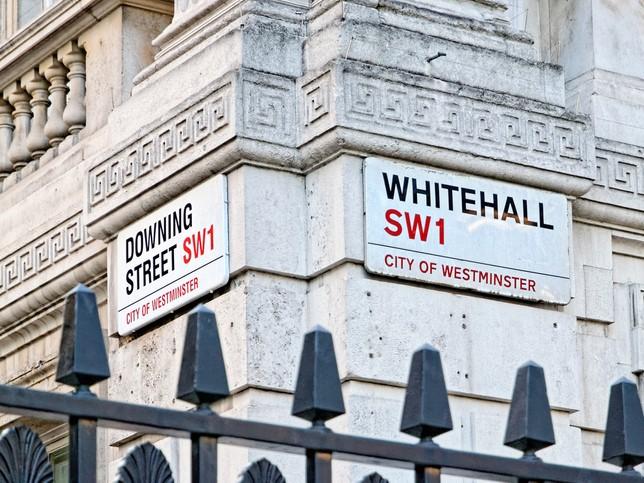When members of Universities UK met the secretary of state for business, energy and industrial strategy, Kwasi Kwarteng, earlier this year, I took the opportunity to raise what I believe to be a fundamental issue in British education today: the risks of creating false dichotomies by dividing the world into STEM and non-STEM, particularly when applied to the innovation cycle.
We know at the Royal College of Art (RCA) that dialogue between disciplines can create extraordinary results. Given the current rhetoric on creative arts subjects from some parts of the government, Dr Kwarteng and his Cabinet colleagues might be interested and surprised to see the evolution that has taken place in leading creative arts universities over the past decade.
By bringing together the arts and sciences, our students benefit from a creative exchange that drives new thinking, innovation and unexpected results. There is a potency to creative insights and “eureka moments” that flow when design and creativity are blended with the hypotheses, step-by-step rigour and evidence-based approach of a scientist. We know just how effective a research collaboration can be when you combine product and textile designers with material scientists whose expertise is in nanocomposite structures; or computational artists working with heavy-duty computer scientists and robotics engineers.
Of course, the undervaluing of the creative sectors is not new, and it’s been the source of much campaigning by colleagues at the Creative Industries Federation as well as individuals such as Julia Black, the newly elected president of the British Academy.
It was therefore very encouraging to read the government’s innovation strategy, published in the summer. It acknowledges that “the design and creative sectors are instrumental elements of the innovation system” and that, in this context, “good design is, for people and the planet, an increasingly critical focus”. It recognised that the design and creative sectors are part of a “rich mix” that is needed to deliver its ambitions.
Our conviction about the benefits of interdisciplinary exchange has shaped our new campus at Battersea, which opens next year. As the largest investment we’ve made in our estate in our 184-year history, it provides a place for fine art, innovation and design, interweaving the arts and sciences and nurturing the next generation of creative entrepreneurs. We talk increasingly about “STEM+D”, where the D equals design.
We’re anticipating an announcement on the government’s plans for post-18 education, and it’s vital that ministers protect creative courses within that. The UK’s world-class creative industries need the talent, of course, but more than that, our future workforce and businesses in every sector of the economy need the range of skills offered by a STEM+D education.
As the Creative UK Group has highlighted, creative roles make up a significant proportion of the government’s Shortage Occupation List, yet related subjects are currently low down on the Department for Education’s list of those considered to be of “strategic importance”.
This inconsistency is surely worth resolving while “building back better” from the Covid-19 pandemic and seeking new ways to truly level up society and the economy. It would align with the government’s Plan for Growth, where the creative industries and creative ideas are highlighted as priorities. And students themselves tell us time and time again that they’re interested in bringing real-world transformational change on a global scale through their practice. Some 30 per cent of RCA enrolments are coming from students who studied disciplines other than design or art at BA or BSc levels – and we expect that trend to continue.
However, innovation can only be at its best when there’s a wide pool of talent involved. Creative arts universities must continue to open up access and create viable pathways into the design industry for young people from underrepresented communities. Ministers, too, must be very careful in playing down the value – in purely financial payback terms – of creative courses, as they risk turning off the tap of candidates from wide socioeconomic backgrounds.
In my conversations with UK- and US-based business leaders, it’s clear they’re increasingly concerned with diversifying the pipelines into industry. That’s why tech leaders such as Bracken Darrell, CEO at Logitech, are supporting new scholarships at the RCA and encouraging applications that increase the overall diversity of talent from which businesses like his can hire.
It’s also worth noting that innovations sitting at the nexus between technology and creativity are ones that create wealth and jobs and are driving the green economy. We would welcome further encouragement from government to get more businesses properly engaged in the forward-looking skills, ideas and energy found in our art schools.
Recent research by Oxford Economics estimated that the creative industries could create 300,000 new jobs and generate £132 billion in gross value added by 2025 if spend and investment are increased by 20 per cent on 2019 levels. That represents an extra £28 billion for the UK economy – more than the financial services, insurance and pension industries combined.
The creative arts university of today is a powerhouse of creativity, innovation and positive economic impact, offering an increasingly diverse student body the opportunity for interdisciplinary exchange as part of their practice. We’re setting the right conditions for creativity, nurturing the sparks of innovation that mean our students will go on to leave a positive legacy in their chosen fields. We look forward to welcoming the business secretary and his colleagues for a visit soon.
Paul Thompson is vice-chancellor of the Royal College of Art.




comment